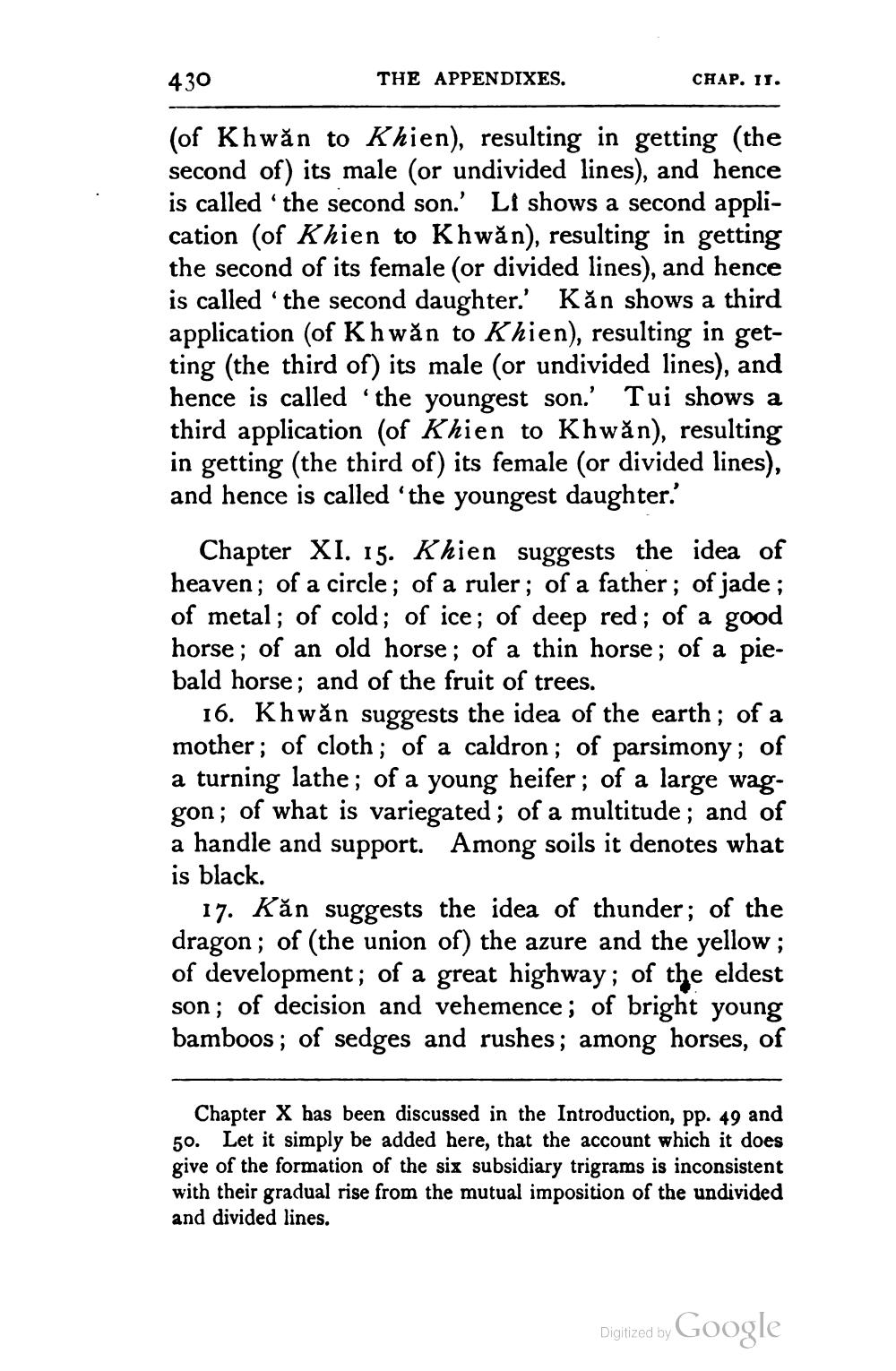________________
430
THE APPENDIXES.
XES.
CHAP. 11.
(of Khwăn to Khien), resulting in getting (the second of) its male (or undivided lines), and hence is called the second son.' Li shows a second application (of Khien to Khwăn), resulting in getting the second of its female (or divided lines), and hence is called 'the second daughter.' Kån shows a third application (of Khwăn to Khien), resulting in getting (the third of) its male (or undivided lines), and hence is called the youngest son.' Tui shows a third application of Khien to Khwăn), resulting in getting (the third of) its female (or divided lines), and hence is called 'the youngest daughter.'
Chapter XI. 15. Khien suggests the idea of heaven; of a circle; of a ruler; of a father; of jade; of metal; of cold; of ice; of deep red; of a good horse; of an old horse; of a thin horse; of a piebald horse; and of the fruit of trees.
16. Khwăn suggests the idea of the earth; of a mother; of cloth; of a caldron; of parsimony; of a turning lathe; of a young heifer; of a large waggon; of what is variegated; of a multitude; and of a handle and support. Among soils it denotes what is black.
17. Kăn suggests the idea of thunder; of the dragon; of (the union of) the azure and the yellow; of development; of a great highway; of the eldest son; of decision and vehemence; of bright young bamboos; of sedges and rushes; among horses, of
Chapter X has been discussed in the Introduction, pp. 49 and 50. Let it simply be added here, that the account which it does give of the formation of the six subsidiary trigrams is inconsistent with their gradual rise from the mutual imposition of the undivided and divided lines.
Digitized by Google




